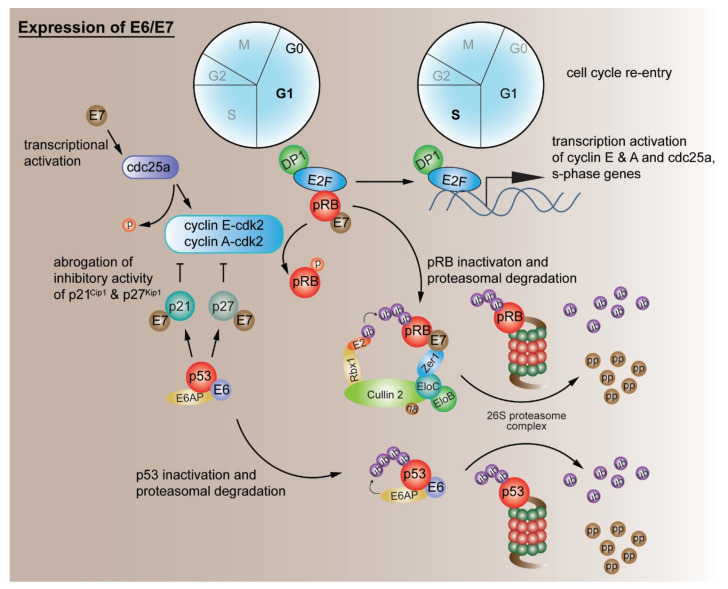Figure 4.
Evading growth suppressors. Unlike normal cells, where the growth and proliferation are tightly controlled, cells expressing HPV oncoproteins act to evade the key tumour suppressors pRB and p53. HPV-E7 can associate with pRB and inactivate the repressive function of the pRB/E2F transcription complex, leading to the expression of S-phase genes (cell cycle regulators, including cdc25a, cyclin E and A and replication enzymes and others) in otherwise cell cycle-exited and differentiating keratinocytes, leading to re-entry to the S phase. Further, high-risk E7 can downregulate pRB via proteasomal degradation via the cullin-2 ubiquitin ligase complex. HPV-16 E7 associates with cdk inhibitors p21Cip1 and p27Kip1, abrogates the inhibition of cdk2 activity and enhances the transcriptional activation of cdc25a, leading to the dephosphorylation of inhibitory phosphorylation in cdk-2/cyclin E/A. This leads to activation of the p53 tumour suppressor; however, high-risk E6 can inactivate and degrade p53 via the ubiquitin proteasome pathway involving the E6AP ubiquitin ligase complex. ub—ubiquitin and pp—2-25 residue peptides.

